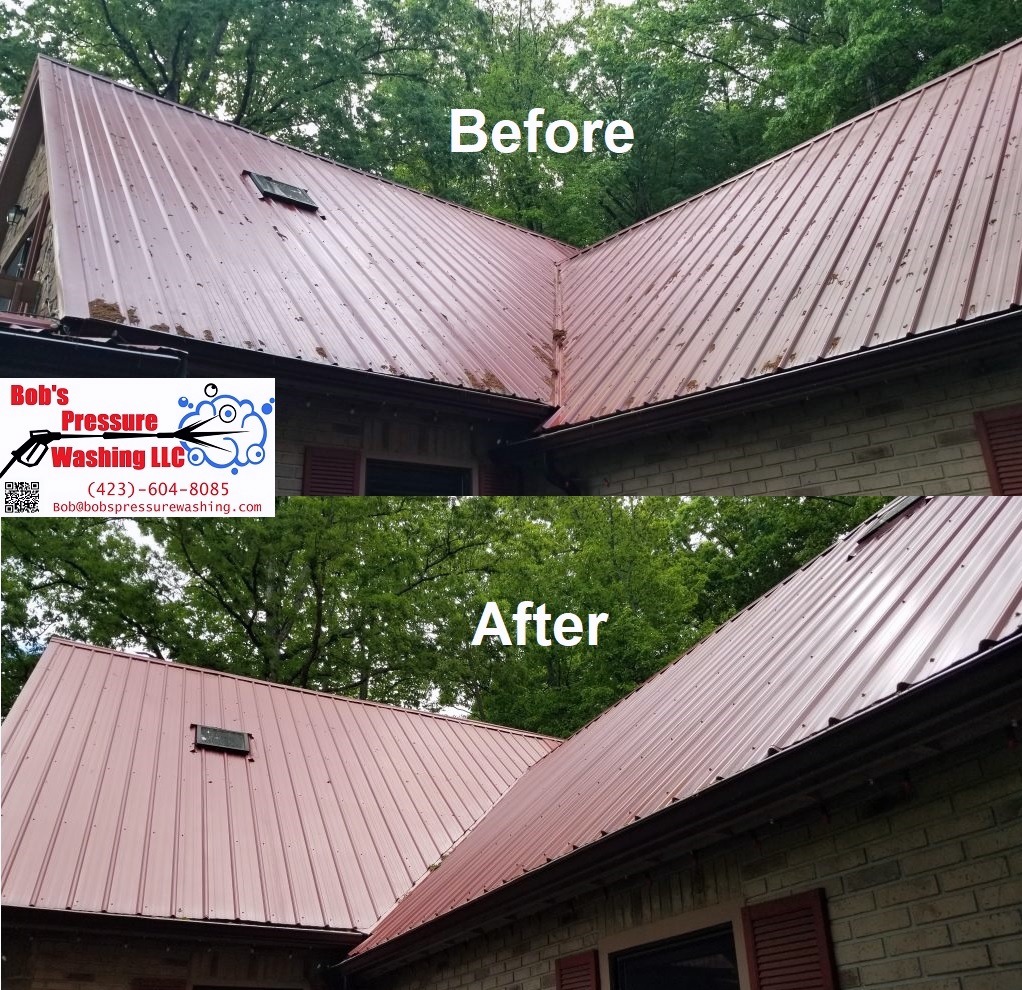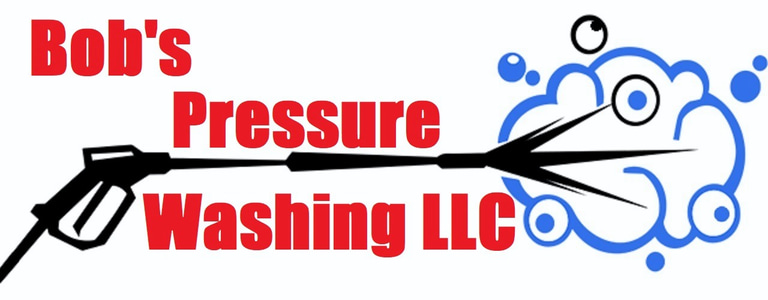Revitalizing Roofs: How Pressure Washing Extends Roof Lifespan
Pressure washing your roof removes moss, algae, and debris, preventing damage that can shorten its lifespan. By keeping your roof clean, you reduce the risk of leaks and costly repairs, helping it last longer and maintain its appearance. Invest in regular pressure washing to protect your roof for years to come. #RoofCare #PressureWashing #RoofMaintenance #ExtendLifespan
EXTERIOR CLEANING SERVICE PROCESSESBASIC HOME MAINTENANCECURB APPEALPRESSURE WASHING SERVICES


The Problem: Understanding Roof Debris and Its Damaging Effects
Roofs are continually subjected to environmental elements, which can lead to the accumulation of various types of debris. Among the most common culprits are algae, moss, dirt, grime, leaves, and other organic materials. These substances create an ideal breeding ground for moisture, particularly in shaded areas where sunlight is limited. For instance, moss thrives in damp conditions, often leading to the lifting of shingles and potentially exposing the underlying materials to further damage.
The presence of organic debris on roofs can lead to significant structural problems. When moisture accumulates beneath layers of dirt and organic growth, it can result in curling, cracking, and warping of shingles. This deterioration not only compromises the integrity of the roof but can also create pathways for leaks to form, leading to further water damage within the home. The effects of trapped moisture go beyond mere aesthetic concerns; they can accelerate the growth of rot and mildew, which can severely diminish the lifespan of roofing materials.
Moreover, algae growth can create dark streaks on roofs, which some homeowners may initially consider superficial. However, the darker stains can contribute to heat absorption, causing the roof to reach higher temperatures, thereby increasing energy costs associated with cooling the home. The impact of neglecting roof cleanliness is not simply an aesthetic one; it poses serious risks to the longevity and functionality of roofing systems.
In addressing these issues timely, homeowners can prevent the adverse effects caused by the buildup of debris, thus ensuring their roofs remain in optimal condition. Regular inspection and maintenance, including pressure washing, play a pivotal role in mitigating the damaging effects of environmental exposure and extending the life of roofing materials.
Algae and Moss: The Hidden Threats to Your Roof
Algae and moss present significant challenges to roof integrity and longevity. These organisms thrive in damp and shaded conditions, which are often found on roofs that are under tree cover or in regions with high humidity. Algae typically appear as black streaks or dark stains, while moss is characterized by a greenish tuft of growth that can easily be mistaken for a harmless plant. If left unchecked, both can cause serious damage to roofing materials over time.
When algae colonize roof surfaces, they can trap moisture against shingles, leading to the deterioration of protective granules. This results in shingles becoming less effective at repelling water, which can ultimately cause them to curl, crack, or lift. Similarly, moss retains water and can create a barrier that prevents proper drainage, paving the way for leaks and structural concerns within the roof itself. The consequences can extend beyond mere aesthetics; compromised roofs can lead to costly repairs and decrease the overall lifespan of the installation.
Identifying the presence of algae and moss is crucial for homeowners. Look for discolored patches, especially in areas that do not receive adequate sunlight. Moss growth is often more visible on corners and north-facing slopes. Regular inspections can help you catch these problems early before they escalate into more severe issues. Preventive measures include trimming back overhanging branches to increase sunlight exposure and utilizing proper ventilation to reduce moisture buildup.
In addition, regular maintenance, such as pressure washing, can effectively combat these unwanted growths. This cleaning method not only removes algae and moss but also restores the original appearance of your roofing materials. By ensuring your roof remains clean and well-maintained, you can mitigate the hidden threats posed by algae and moss, prolonging the lifespan of your roof and protecting your home from potential damage.
Dirt and Grime: The Silent Destroyer of Roof Longevity
The roof serves as the first line of defense against the elements, yet it is often neglected when maintenance is considered. Accumulated dirt and grime can significantly affect the durability and lifespan of roofing materials. Over time, these contaminants build up, creating layers that trap moisture against the roof's surface. This trapped moisture fosters an ideal environment for the growth of mildew, mold, and other forms of decay, ultimately compromising the structural integrity of the roof.
Seasonal changes can exacerbate the accumulation of dirt and grime. For example, during the fall, leaves and organic debris may collect on the roof, creating thick layers that retain moisture. In winter, snow and ice may form on these dirty surfaces, leading to further moisture retention as temperatures fluctuate. Such conditions often lead to increased wear and tear, due to not only microbial growth but also the freeze-thaw cycle affecting the roofing materials themselves.
The neglect of regular roof cleaning can result in substantial financial repercussions. Increased maintenance costs emerge when homeowners are faced with the need for repairs due to underlying damage caused by persistent dirt and moisture. Furthermore, ignoring these issues can lead to costly replacements of roofing materials that would otherwise have had a longer lifespan with appropriate upkeep. The importance of proactive cleaning becomes clear; by removing dirt and grime, homeowners help maintain their roofs and, consequently, their overall property investment.
In light of these considerations, incorporating effective cleaning methods into regular roof maintenance is essential. Pressure washing, for instance, can effectively eliminate accumulated debris without damaging the roofing materials, ensuring proper upkeep and extending roof longevity. Thus, maintaining a clean roof is critical not only for aesthetic reasons but also for preserving its functional integrity and avoiding expensive repairs in the future.
The Solution: Pressure Washing for Roof Revitalization
Pressure washing has emerged as a highly effective solution for restoring the condition and integrity of roofs. Over time, roofs accumulate various forms of debris, including algae, moss, dirt, and leaves, which can lead to significant deterioration if not addressed. The process of pressure washing effectively removes these harmful contaminants, revealing a clean surface that not only enhances the aesthetic appeal of the roof but also improves its functionality.
One of the primary benefits of pressure washing is its ability to prevent leaks from developing. Algae and moss growth can trap moisture against the roofing material, leading to rot and water intrusion in the underlying structures. By regularly utilizing pressure washing, homeowners can ensure their roofs remain dry and free from the hazards associated with moisture accumulation, ultimately prolonging the lifespan of the roof.
Moreover, the removal of debris through pressure washing helps avert future costly repairs. When a roof is neglected, it can suffer from increased wear and tear, necessitating expensive interventions or even complete replacement. By investing in routine pressure washing, homeowners can save significant amounts of money over time by maintaining the condition of their roofs and preventing premature failure.
For those considering pressure washing as a maintenance option, it is advisable to follow expert recommendations regarding frequency. Generally, a thorough pressure washing session every one to three years may suffice to keep roofs in optimal condition, depending on environmental factors such as local climate and proximity to trees. Additionally, safety measures should always be observed, including using appropriate protective gear and hiring trained professionals when necessary. Taking these precautions will ensure that the roof is effectively cleaned without risking damage to the material or personal injury.
